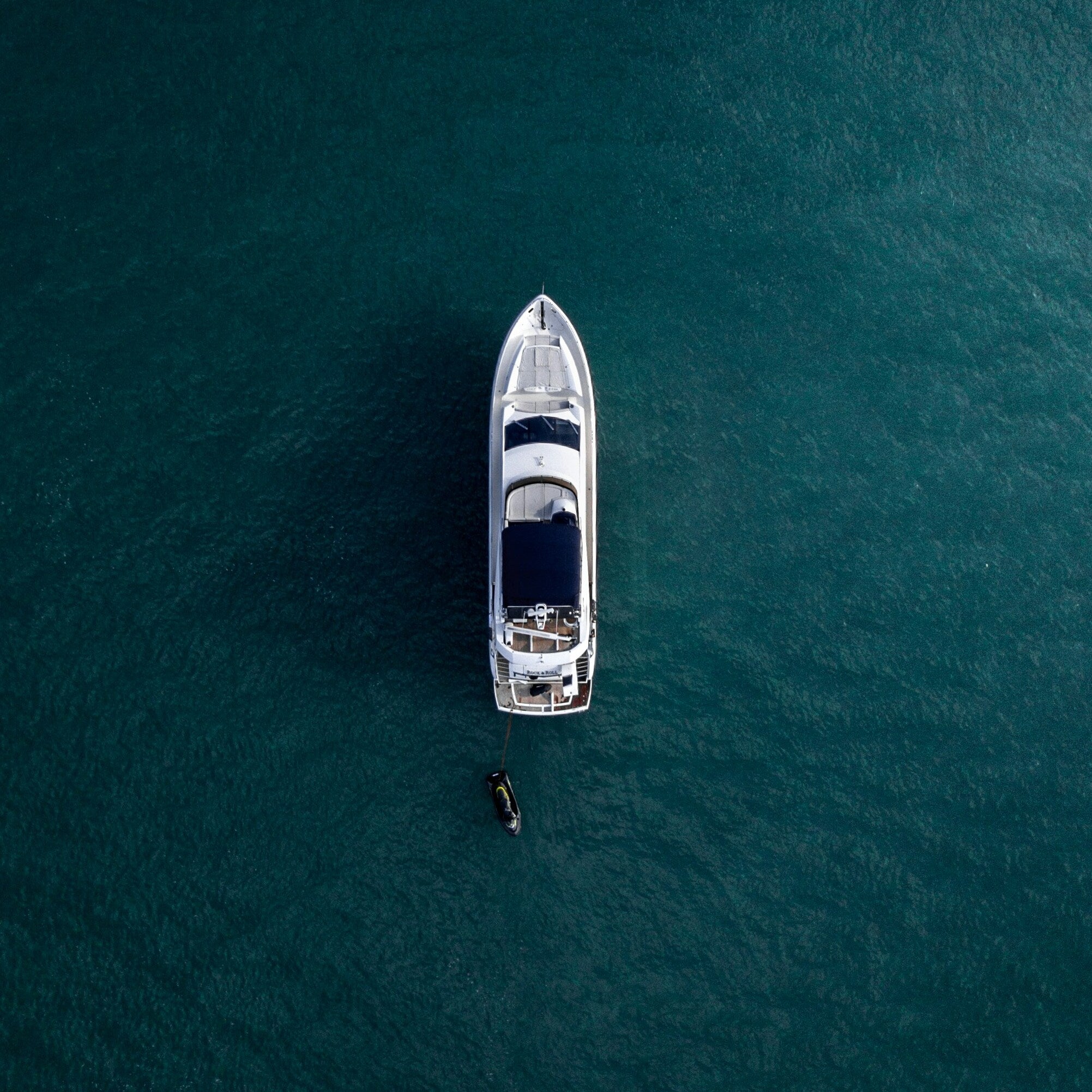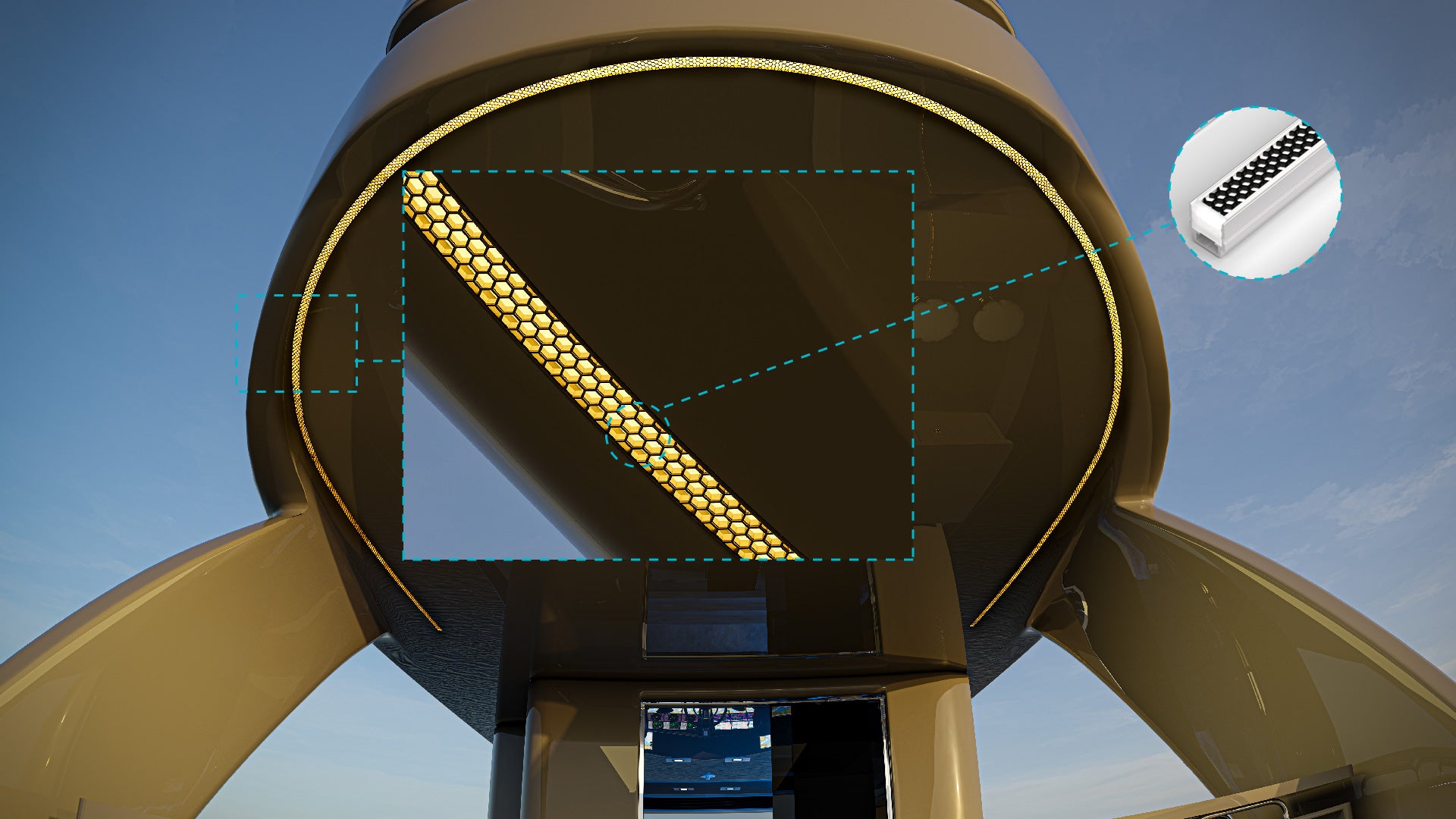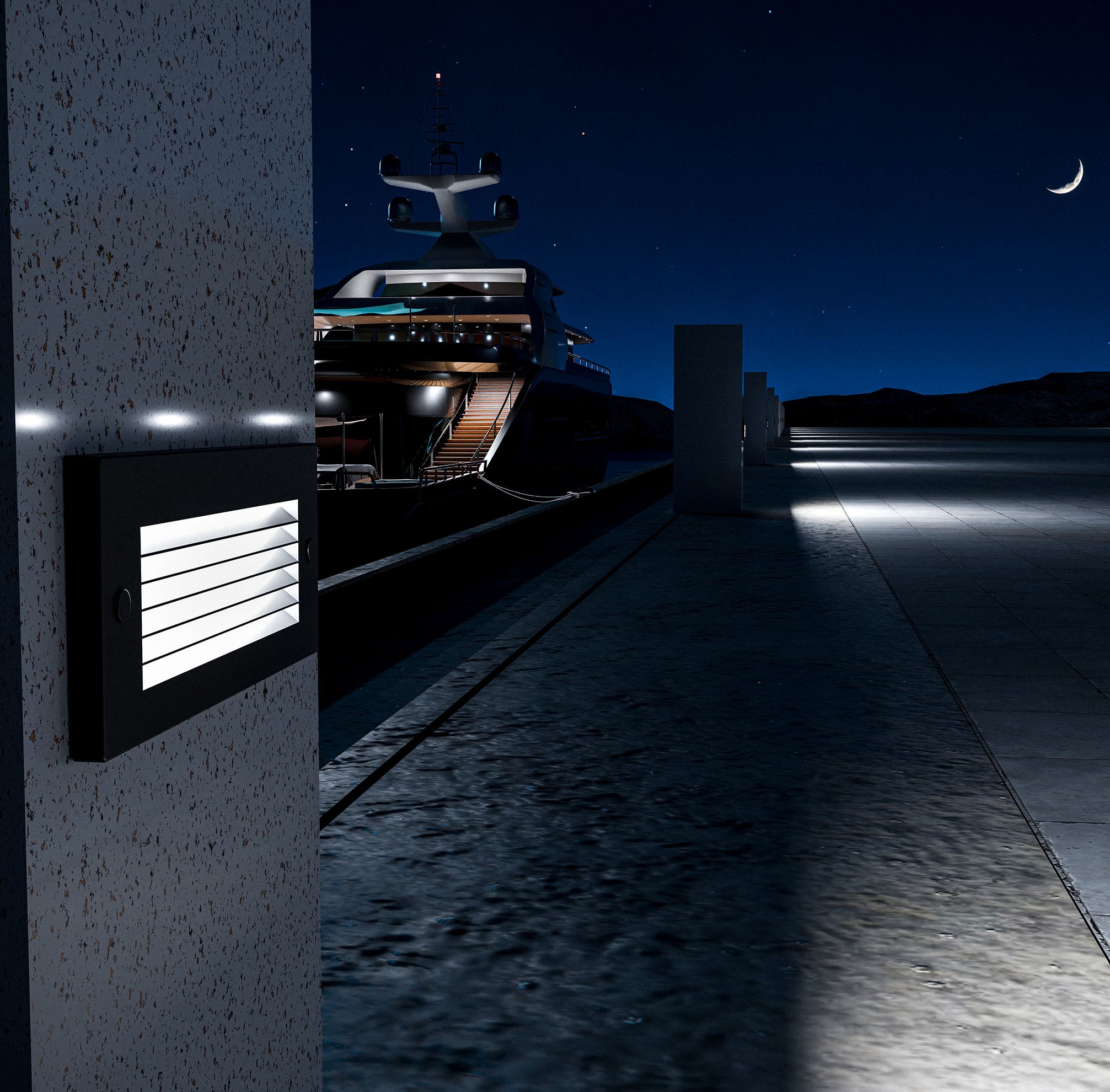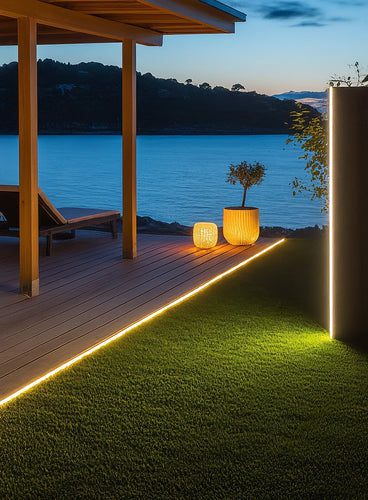The marine lighting industry is on the brink of a technological revolution as we enter 2025. Innovations in LED lighting, smart systems, and sustainable technologies are reshaping how boats, yachts, and marine spaces are illuminated. Marine lighting is no longer just about visibility; it’s about energy efficiency, automation, and enhancing the overall experience on the water.
In this blog, we’ll explore the top marine lighting trends for 2025, providing insights into how these advancements can improve safety, reduce operational costs, and deliver stunning aesthetic appeal. Whether you're a boat owner, marina operator, or marine industry professional, staying ahead of these trends is essential for making informed decisions.
Smart Marine Lighting Systems
The Rise of IoT in Marine Lighting
The Internet of Things (IoT) has revolutionized many industries, and marine lighting is no exception. Smart marine lighting systems allow boat owners to control and monitor lighting setups remotely via mobile applications, touch panels, or voice assistants like Alexa and Google Home. IoT integration means that lights can be programmed to operate on schedules, respond to real-time environmental conditions, and sync with other onboard systems for maximum efficiency. Whether it's adjusting deck lights for an evening gathering or ensuring navigation lights are active during low visibility, IoT systems make lighting management seamless.
These advancements provide unparalleled convenience, reduce manual intervention, and offer precise control over power usage, ultimately leading to significant cost savings over time.
Automation for Enhanced Safety and Convenience
Automation in marine lighting goes beyond convenience; it’s a critical feature for safety. Automated systems can adjust brightness, switch between operational modes, and even trigger emergency lighting sequences without human intervention. For example, motion sensors can illuminate walkways when someone steps on deck at night, reducing the risk of falls or accidents. Similarly, automated systems can detect failing lights and alert operators before they become safety hazards.
This level of sophistication ensures that lighting not only serves functional purposes but also enhances the overall safety and reliability of marine operations.
Real-Life Applications on Modern Boats
Modern boats, particularly luxury yachts and fishing vessels, are leading the adoption of smart marine lighting systems. From advanced cabin mood lighting setups to exterior floodlights managed through centralized control panels, these systems are transforming the onboard experience. Imagine arriving at your yacht after sunset and having all essential pathways, staircases, and cabin areas automatically illuminated as soon as you step aboard.
In 2025, IoT-enabled lighting will become a standard feature on new vessels, providing smarter, safer, and more energy-efficient solutions for marine lighting.
Energy Efficiency and Sustainability
Next-Generation Energy-Saving LEDs
Marine LED technology continues to evolve, offering boat owners even more efficient lighting options. Next-generation LEDs are designed to consume up to 80% less energy compared to traditional incandescent or halogen bulbs while producing brighter, more consistent light. These advancements are critical on boats, where power conservation directly impacts operational efficiency, especially on long voyages where every watt counts.
In addition to their energy-saving benefits, modern LEDs are also built with durability in mind. With lifespans exceeding 50,000 hours, they reduce the need for frequent replacements, lowering long-term costs and maintenance requirements.
Solar-Powered Marine Lighting
Solar-powered marine lighting systems are rapidly gaining traction as both boat owners and marina operators look for sustainable alternatives. These lights draw power from onboard or external solar panels, allowing for self-sustaining illumination. Solar-powered deck lights, navigation lights, and even underwater lights are becoming increasingly common, particularly in marinas and remote boating locations where access to traditional power sources is limited.
By harnessing renewable energy, solar-integrated marine LED systems not only reduce fuel dependency but also align with global sustainability initiatives aimed at minimizing carbon emissions from marine operations.
Reducing Carbon Footprints on the Water
Energy-efficient lighting solutions play a crucial role in reducing the carbon footprint of boats and marine infrastructure. Less power consumption means less fuel burned by onboard generators, resulting in fewer emissions. Additionally, the extended lifespan of LED lights minimizes waste generated from frequent replacements, contributing to overall environmental conservation efforts.
In 2025, eco-friendly lighting will no longer be a luxury but a necessity for modern marine operations.
Advanced Waterproof and Weatherproof Designs
Improved IP Ratings for Maximum Protection
The harsh marine environment requires lighting systems to withstand saltwater exposure, heavy rain, and fluctuating temperatures. In 2025, high IP (Ingress Protection) ratings like IP67 and IP68 have become industry standards for marine LED lights. These ratings indicate the lights' ability to resist water, dust, and other environmental factors. IP68-rated lights, for example, can function even when submerged underwater, making them ideal for hull lights, underwater illumination, and dock applications.
Investing in high IP-rated lights ensures longer-lasting performance, fewer failures, and reduced maintenance costs.
Anti-Corrosion Technology in Marine Lighting
Saltwater is one of the most corrosive environments for metal and electrical components. Modern marine lighting fixtures now use marine-grade stainless steel (like 316 SS) and specialized anti-corrosion coatings to extend their lifespan. These materials prevent rusting, ensure structural integrity, and maintain performance even after prolonged exposure to seawater.
Whether it's exterior floodlights or deck-mounted spotlights, corrosion-resistant materials are now a must-have in marine lighting design.
UV-Resistant Coatings for Longevity
In addition to saltwater exposure, marine lights are constantly exposed to intense UV rays, which can degrade plastic and rubber components over time. New UV-resistant coatings protect lights from yellowing, cracking, and structural damage caused by prolonged sun exposure.
This innovation ensures that both the functional and aesthetic aspects of marine lighting remain intact for years to come.
Enhanced Aesthetic Lighting Solutions
The Popularity of RGB and Color-Changing LEDs
RGB LED lighting technology has made it easier than ever for boat owners to customize their lighting setups. With millions of possible colors and programmable light patterns, RGB LEDs can create dynamic underwater displays, elegant deck ambiance, or festive party lighting.
LED Strip Lighting for Decks and Interiors
LED strip lights are becoming a staple in marine design. These lights are highly versatile and can be installed under railings, seating areas, and even staircases to add both safety and style.
Custom Lighting Fixtures for Modern Marine Spaces
Custom lighting designs are gaining popularity in luxury yachts and high-end marine spaces. Manufacturers now offer tailor-made fixtures designed to integrate seamlessly into the vessel's architecture.
Integration of Smart Sensors
Motion Sensors for Enhanced Security and Efficiency
Motion sensors are becoming an essential part of modern marine lighting systems, offering both security and energy efficiency. These sensors detect movement and automatically activate lights in key areas like walkways, staircases, and engine rooms. This functionality not only enhances safety by ensuring proper illumination in critical zones but also conserves energy by turning off lights when no movement is detected.
For example, deck motion sensors can light up pathways when someone walks across the deck at night, preventing accidents while avoiding unnecessary energy consumption. For docked vessels, motion sensors also serve as an added layer of security, alerting boat owners or marina staff to unauthorized movement onboard.
Daylight Sensors for Adaptive Lighting
Daylight sensors, also known as photoelectric sensors, automatically adjust lighting levels based on ambient natural light. During daylight hours, these sensors can reduce or turn off unnecessary artificial lighting, saving battery power and reducing operational costs. At dusk or during overcast weather, the sensors seamlessly adjust brightness to maintain optimal illumination.
For marina owners, daylight sensors are a game-changer, reducing energy costs while ensuring consistent lighting across outdoor spaces without requiring manual intervention.
Proximity Sensors for Zoned Lighting
Proximity sensors are particularly useful in large vessels with distinct zones requiring variable lighting needs. For example, these sensors can trigger lights in storage compartments, engine bays, or rarely accessed corridors as someone approaches. Once the area is vacated, the lights automatically turn off, conserving energy without relying on manual switches.
In addition to convenience, proximity sensors also add a layer of safety, especially in enclosed spaces where sudden illumination can prevent accidental injuries or equipment mishandling.
Focus on Light Pollution Reduction
Directional Beams for Targeted Illumination
Light pollution is becoming a growing concern, especially in popular marine destinations and environmentally protected zones. One of the most effective solutions in marine lighting design is the use of directional beams. These lights focus illumination precisely where it’s needed—whether it's on the deck, walkways, or underwater—minimizing unnecessary light spill into the surrounding water or sky.
For example, dock lights with directional beams reduce glare that could disrupt marine ecosystems or interfere with nearby vessels’ navigation visibility.
Compliant with Environmental Standards
Many coastal regions are introducing strict regulations to control light pollution in marine areas. Compliant marine LED lighting systems are now engineered to meet these standards, ensuring they operate responsibly without causing harm to aquatic life or interfering with stargazing experiences.
Investing in compliant lighting not only aligns with environmental responsibilities but also avoids potential legal penalties or restrictions on vessel operations in regulated waters.
Protecting Marine Ecosystems with Responsible Lighting
Uncontrolled underwater lighting can disrupt marine life, disorienting fish and disturbing nocturnal behaviors. Responsible marine LED designs prioritize downward-facing beams, lower lumen outputs, and minimal blue light emission to reduce interference with aquatic ecosystems.
Whether it's lighting up a dock, navigating at night, or creating ambiance underwater, responsible lighting practices ensure boaters can enjoy the water without harming its natural inhabitants.
Innovative Applications of Underwater LED Lighting
Underwater LEDs for Fishing and Night Diving
Underwater LED lights are becoming indispensable tools for night fishing and diving expeditions. These specialized lights attract fish by mimicking natural bioluminescence, creating an irresistible environment for marine life. Anglers and fishing charters are increasingly using underwater LEDs to improve catch rates during night expeditions.
For divers, underwater LED lights offer superior visibility, illuminating the seabed and revealing marine habitats in crisp detail. Lights with adjustable color temperatures allow divers to adapt to different water conditions, enhancing their underwater experiences.
Aesthetic Enhancements with RGB Underwater LEDs
RGB underwater LED lights are not only functional but also aesthetically striking. They create a vibrant halo of colors around the hull, adding an elegant glow to yachts and enhancing the visual appeal of docked boats. With app-controlled color presets, boat owners can easily switch between party vibes, romantic ambiances, or serene underwater glow effects.
Underwater RGB lighting is also popular in marina settings, transforming docks and waterfront spaces into visually captivating areas during nighttime events or gatherings.
Improving Visibility During Maintenance Operations
Underwater inspections and maintenance tasks are often hindered by poor visibility. High-powered underwater LED lights are now being used to illuminate hulls, propellers, and underwater structures, making inspections and repairs easier and more effective.
These lights are particularly useful for detecting hull damage, cleaning barnacles, or ensuring proper anchor deployment, ultimately saving time and preventing costly maintenance oversights.
Automation and Smart Integration with Marine Systems
Centralized Control Panels for Simplified Management
Centralized lighting control panels are becoming standard on modern marine vessels, offering an all-in-one interface to manage lighting zones, brightness levels, and color settings. Whether it's interior cabin lighting, underwater LEDs, or deck floodlights, these panels allow boat owners to control every lighting aspect from a single point.
Many systems now also feature touchscreens, mobile app integration, and pre-set modes for navigation, docking, or party events. This simplifies management and reduces the chances of oversight, especially on larger vessels.
Voice-Activated Marine Lighting Systems
Voice control integration is bringing a new level of convenience to marine lighting. Boat owners can use voice commands to adjust brightness, switch between modes, or even activate security lighting. Whether it’s calling for deck lights while steering or dimming the interior cabin for a movie night, voice commands make lighting management hands-free and effortless.
As voice assistants become more sophisticated, this integration is expected to become a standard feature on premium marine vessels.
The Role of AI in Marine Lighting Automation
Artificial Intelligence (AI) is starting to play a role in marine lighting systems, optimizing energy usage and predicting lighting needs based on usage patterns. For example, AI algorithms can detect when and where lighting is most frequently used and adjust schedules accordingly to minimize waste.
AI-powered lighting systems can also monitor the health of lighting fixtures, sending maintenance alerts before failures occur, preventing potential safety hazards.
The marine lighting landscape in 2025 is characterized by smarter systems, energy efficiency, and a focus on environmental responsibility. From smart IoT-enabled lighting to stunning underwater RGB displays, these trends are enhancing functionality, safety, and aesthetics on the water.
Whether you're upgrading your existing boat or investing in a new vessel, these innovations promise better experiences, cost savings, and a reduced environmental footprint.
Stay ahead of the curve by exploring K2 Lighting’s latest range of innovative marine LED lighting solutions. From smart systems to energy-efficient designs, we offer everything you need to embrace the trends of 2025.





